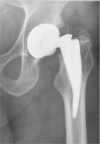Fatigue performance of medical Ti6Al4V alloy after mechanical surface treatments
- PMID: 25823001
- PMCID: PMC4379149
- DOI: 10.1371/journal.pone.0121963
Fatigue performance of medical Ti6Al4V alloy after mechanical surface treatments
Abstract
Mechanical surface treatments have a long history in traditional engineering disciplines, such as the automotive or aerospace industries. Today, they are widely applied to metal components to increase the mechanical performance of these. However, their application in the medical field is rather rare. The present study aims to compare the potential of relevant mechanical surface treatments on the high cycle fatigue (R = 0.1 for a maximum of 10 million cycles) performance of a Ti6Al4V standard alloy for orthopedic, spinal, dental and trauma surgical implants: shot peening, deep rolling, ultrasonic shot peening and laser shock peening. Hour-glass shaped Ti6Al4V specimens were treated and analyzed with regard to the material's microstructure, microhardness, residual stress depth profiles and the mechanical behavior during fatigue testing. All treatments introduced substantial compressive residual stresses and exhibited considerable potential for increasing fatigue performance from 10% to 17.2% after laser shock peening compared to non-treated samples. It is assumed that final mechanical surface treatments may also increase fretting wear resistance in the modular connection of total hip and knee replacements.
Conflict of interest statement
Figures










References
-
- Bothe RT, Beaton LE, Davenport HA. Reaction of bone to multiplemetallic implants. Surg Gynecol Obstet. 1940;71: 598–602.
-
- Branemark PI. Osseointegration and its experimental background. J Prosthet Dent. 1983;50: 399–410. - PubMed
-
- Leventhal GS. Titanium, a metal for surgery. J Bone Joint Surg Am. 1951;33: 473–474. - PubMed
-
- Banovetz JM, Sharp R, Probe RA, Anglen JO. Titanium Plate Fixation: A Review of Implant Failures. J Orthop Trauma. 1996;10: 389–394. - PubMed
Publication types
MeSH terms
Substances
LinkOut - more resources
Full Text Sources
Other Literature Sources

